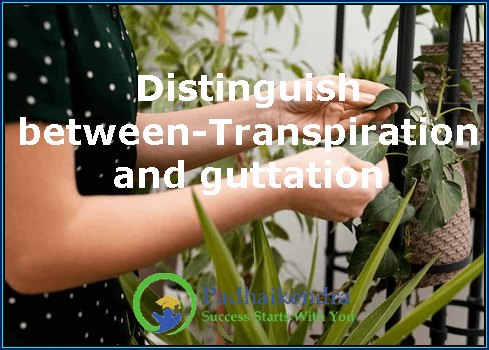Transpiration and guttation are two different processes by which plants lose water, but they differ in their mechanisms and the conditions under which they occur. Here are the differences:
- Mechanism: Transpiration is the process by which plants lose water through small openings called stomata in their leaves, whereas guttation is the process by which plants lose water in the form of droplets through specialized structures called hydathodes at the tips of leaves.
- Conditions: Transpiration occurs during the day when the stomata are open and the air around the plant is drier than the air inside the leaf. Guttation, on the other hand, occurs at night or in the early morning when the air is humid and the soil is moist.
- Water loss: Transpiration results in a gradual loss of water from the plant, while guttation results in a sudden loss of water in the form of droplets.
- Site of water loss: Transpiration occurs through stomata present on the upper and lower surface of the leaves, whereas guttation occurs through specialized structures called hydathodes located on the tips or edges of leaves.
- Purpose: Transpiration plays a vital role in transporting water and nutrients from the roots to other parts of the plant, while guttation is a mechanism to remove excess water from the plant’s tissues.
- Process: Transpiration is an active process that requires energy from the plant, while guttation is a passive process that occurs due to the build-up of root pressure in the plant’s tissues.





